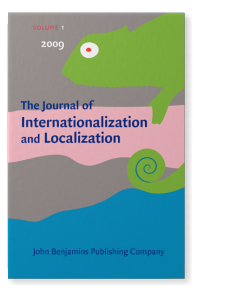[CFP] The role of ISO/TC 37 standards for translators, interpreters, terminologists and beyond
 The Journal of Internationalization and Localization Special Issue: 2022, 9 (1)
The Journal of Internationalization and Localization Special Issue: 2022, 9 (1)
The annual ISO TC 37 (Language and terminology) meetings in Brussels 2021 will be concluded with an online symposium on the role of ISO/TC 37 standards for translators, interpreters and terminologists, which may be extended beyond translators and interpreters.
At the symposium, speakers will demonstrate the impact of TC 37 ISO standards in numerous areas of translation, interpreting and terminology, covering various topics of TC 37 Subcommittees (SC).
The Journal of Internationalization and Localization (JIAL) takes this opportunity to extend the
symposium to publishing a special issue on the impact of ISO standards in today’s fast changing
professional scene of translators, interpreters and terminologists with a focus on the following areas.
SC 1 – Principles and methods
SC 1 focuses on the standardization of principles and methods related to terminology, ontologies,
terminology policies and knowledge organization, and publishes standards on a typology of language registers, concept modelling in terminology work, terminology principles and terminology policies.
SC 2 – Terminology workflow and language coding
SC 2 covers standardization of terminological methods and applications for languages and linguistic content, and publishes standards on language varieties, including codes for the representation of names of languages, translation-oriented terminography and assessment and benchmarking of terminological resources. SC 2 standards play a role in language coding, cultural diversity management, assessment and quality management.
SC 3 – Management of terminology resources
SC 3 covers standardization of the specification, design and interoperability of terminology resources.
SC 3 publishes standards on data categories, data interchange, database management, including
computer applications in terminology and management of terminology resources. SC 3 standards have an impact on terminology extraction, specifications and modelling principles for computer systems to manage terminology, semantic interoperability, controlled authoring and search engine optimization, chatbots, machine learning and AI.
SC 4 – Language resource management
SC 4 covers standardization of the modelling, specification, design, documentation and encoding of digital language resources to enable integration, interchange and replicability. SC 4 publishes standards on mechanisms for language resources, semantic annotation, lexical resources, workflow of language resource management and linguistic annotation.
SC 5 – Translation, interpreting and related technology
SC 5 covers standardization in the field of translation, interpreting, as well as translation and
interpreting related technology, technical writing, content management, localization, globalization, and internationalization. SC 5 publishes standards on simultaneous interpreting, translation projects, translation services, community interpreting, post-editing of machine translation output, interpreting ergonomics and legal translation.
To publicize the impact of ISO TC 37 standards worldwide, we invite both professionals and scholars to submit unpublished, original 6,000-8,000-word articles.
For more details, please visit: https://www.benjamins.com/series/jial/callforpapers_jial_9-1.pdf
